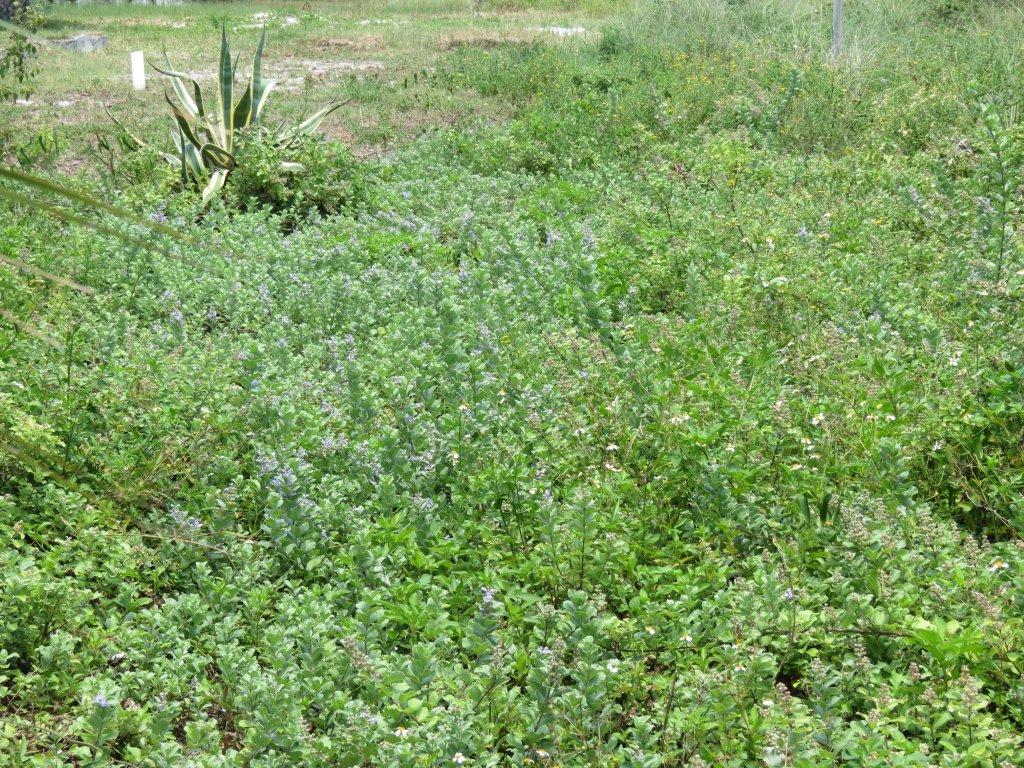
by Rick O'Connor | Nov 3, 2025
Each year Florida Sea Grant conducts a summer survey of selected invasive species of concern in the coastal area of Pensacola Bay.
Below are the results of the 2025 survey.
Beach vitex
Beach vitex is an invasive vine that grows in the sands of our beaches and dunes. Our records currently show 108 sites in the bay area where the plant exists.
| Location |
Number of sites |
Surveyed in 2025 |
| Gulf Breeze |
3 |
No |
| Pensacola Beach |
68 |
Yes |
| Perdido Bay |
2 |
No |
| Perdido Key |
3 |
No |
| Gulf Islands National Seashore – Naval Live Oaks |
24 |
No |
| Gulf Islands National Seashore – Ft. Pickens |
1 |
No |
| Navarre Beach |
8 |
No |
| Location |
Private property |
Public property |
Status |
| Gulf Breeze |
1 |
2 |
One of the public sites HAS been removed. |
| Pensacola Beach |
42 |
26 |
25 sites have had the plant removed and it has not returned.
26 sites have had the plant removed BUT it has returned.
16 sites have never been treated. Most of these are private properties.
1 site status unknown (construction currently ongoing). |
| Perdido Bay |
1 |
1 |
Status unknown. |
| Perdido Key |
2 |
1 |
Private property is being treated. Status of public site is unknown. |
| Gulf Islands National Seashore – Naval Live Oaks |
0 |
24 |
Unknown. |
| Gulf Islands National Seashore – Ft. Pickens |
0 |
1 |
Status unknown. |
| Navarre Beach |
? |
? |
Status of all is unknown. |
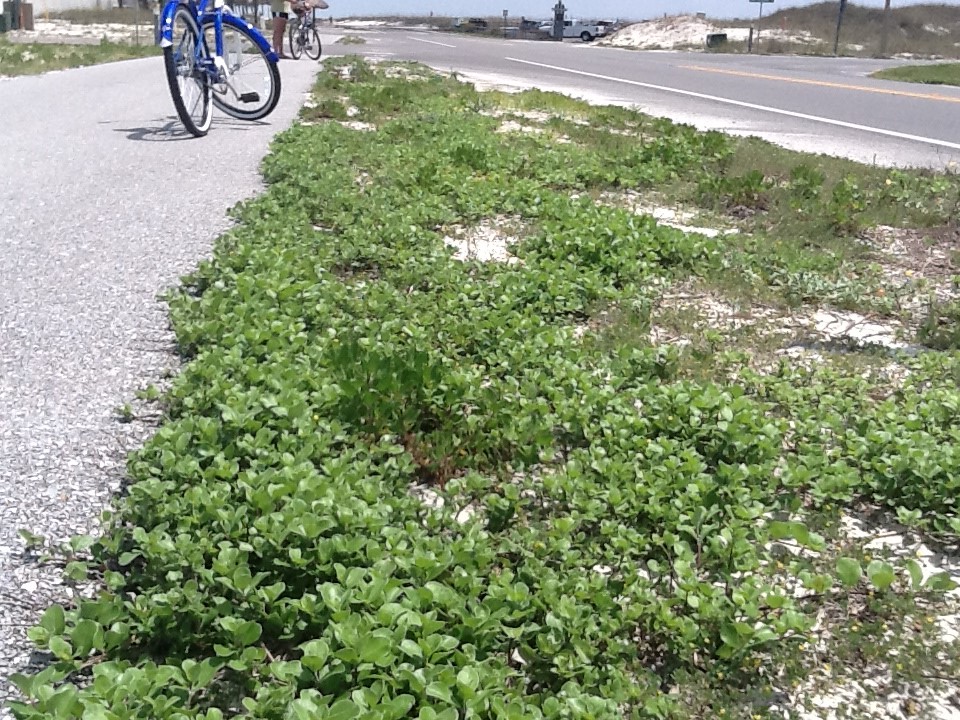
Vitex beginning to take over bike path on Pensacola Beach. Photo credit: Rick O’Connor
Tilapia
We estimate there are about 60 Blue and Nile tilapia living in the upper “right arm” of Bayou Chico east of “W” Street (could be under estimated). There was a collection effort this year and 25 of those fish were removed. Surveys west of “W” street have not shown in evidence of tilapia invasion. We encourage waterfront residents of Bayou Chico to report any sightings of this fish.
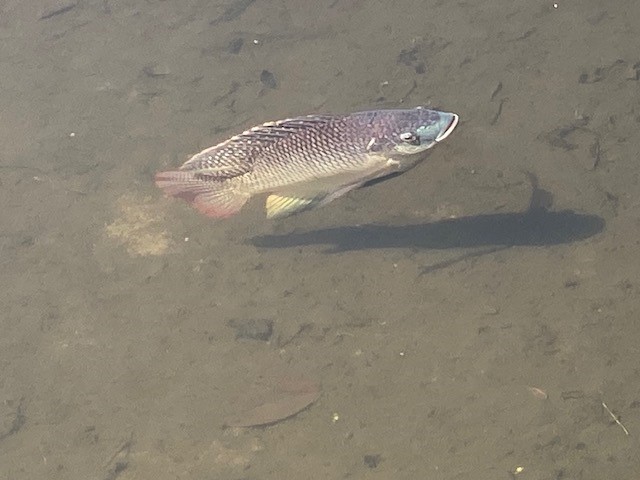
Tilapia found in Pensacola.
Photo: Molly O’Connor
Lionfish
It is well known that lionfish exist in the Gulf. Whether, and how many, exist within the bay is unknown. Since we began monitoring (2013) we know of 3 records within Big Lagoon – all were removed. In the last five years there have been reports of lionfish near the fishing pier at Ft. Pickens. Volunteer removals have removed at least 10 fish from this location. No surveys or removals occurred in 2025. Surveys were conducted at the snorkel reef near Park West, and the artificial reefs near the Grand Marlin in 2025 – no lionfish were found.
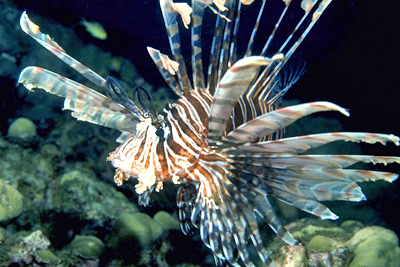
Photo courtesy of Florida Sea Grant
Cogongrass
Cogongrass has been found on Perdido Key. No surveys were conducted in 2025, and status is unknown.
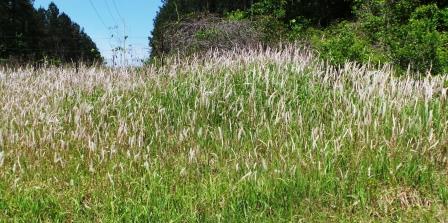
Cogongrass shown here with seedheads – more typically seen in the spring. If you suspect you have cogongrass in or around your food plots please consult your UF/IFAS Extension Agent how control options.
Photo credit: Mark Mauldin
Cuban Treefrogs
Several reports of additional Cuban treefrogs were submitted in 2025. According to the national database EDDMapS, there are 18 records from the Pensacola Bay area – 1 from Gulf Shores.
| Location |
Number of CTFs reported |
| Perdido Key |
3 |
| Downtown Pensacola |
3 |
| Ensley area |
3 |
| Near UWF |
1 |
| Near Scenic Heights |
1 |
| Pensacola Beach |
2 |
This is most likely underreported. If you believe you have a Cuban treefrog, please contact the Escambia County Extension and/or report to the EDDMapS database. If you are interested in setting up a Cuban treefrog trap – contact the Extension Office to learn how.
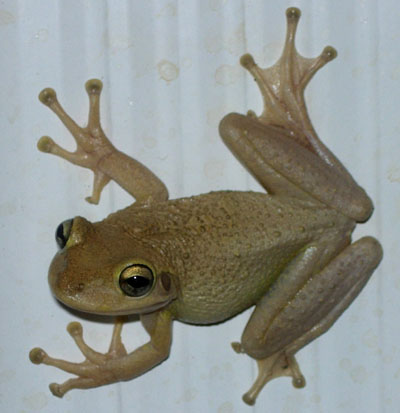
Cuban Treefrog.
Photo by: Dr. Steve Johnson
Giant salvinia
This invasive plant has been found in several locations within Bayou Chico. We will be removing a small portion of the problem near “W” Street this year. We encourage waterfront homeowners on Bayou Chico to assist with removal, and destruction, of this plant.
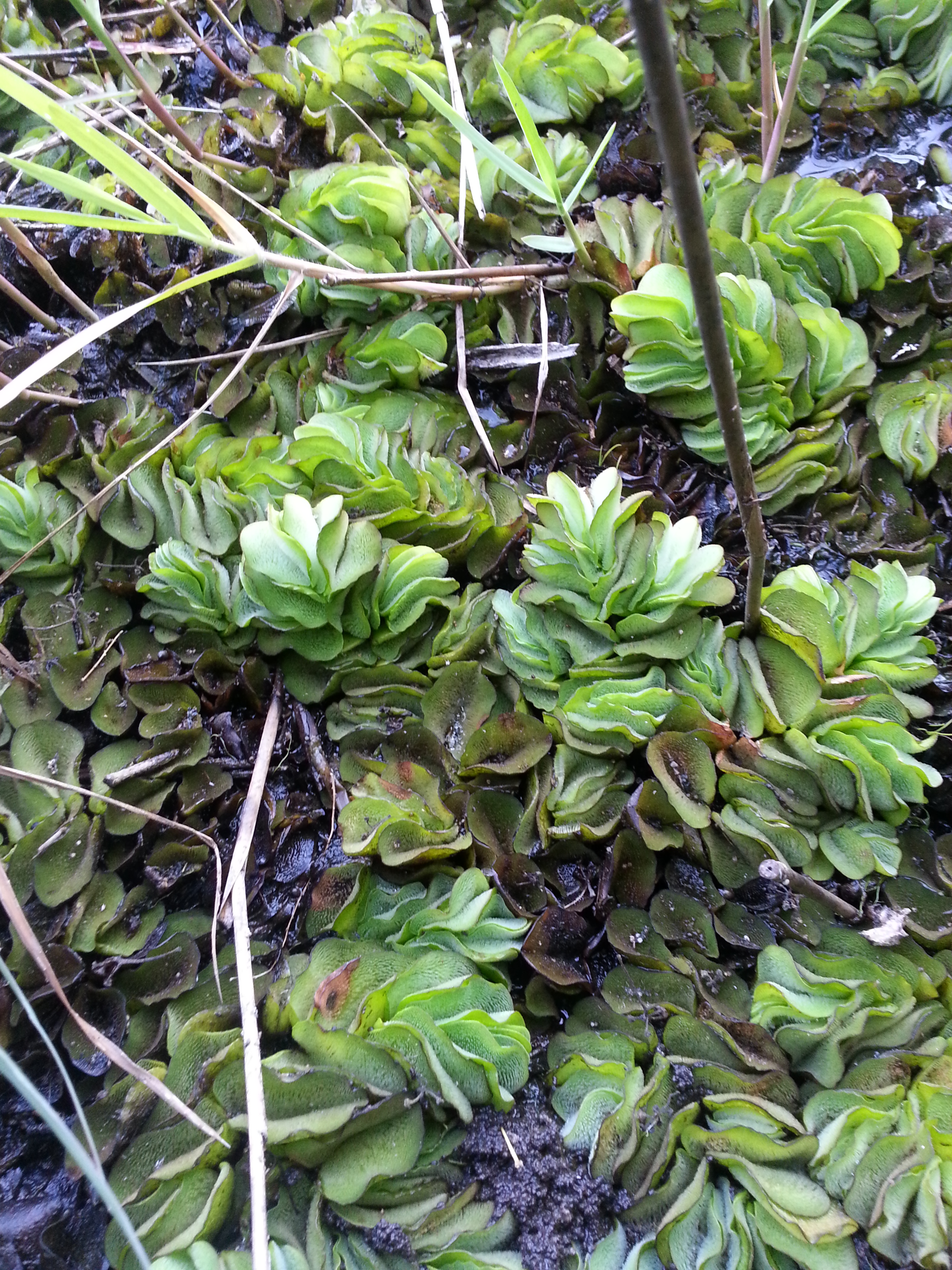
Active growing Giant Salvinia was observed growing out of the pond water on to moist soils and emerging cypress and tupelo tree trunks. Photo by L. Scott Jackson
Green mussels
There was one UNCONFIRMED report of this invasive mussel in Pensacola Bay. If you believe you have seen this – please contact the Escambia County Extension Office.
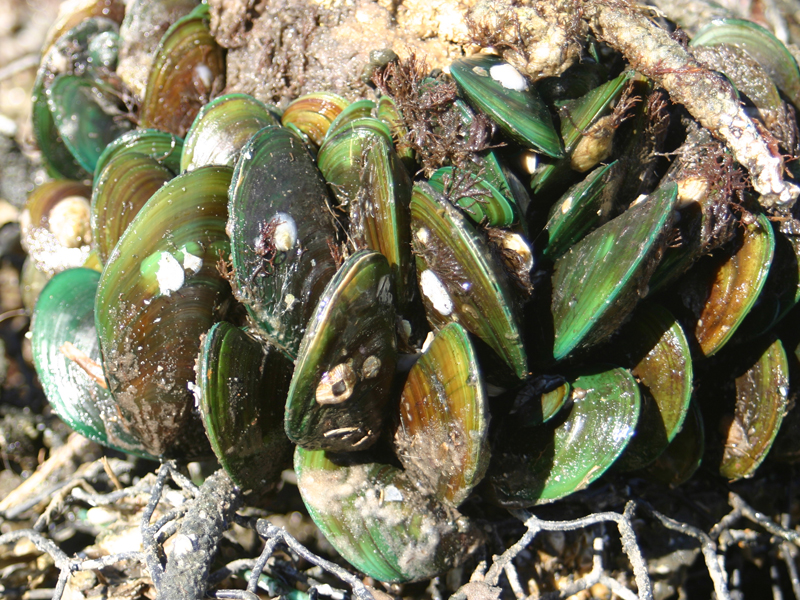
This cluster of green mussels occupies space that could be occupied by bivavles like osyters.
Nutria
There is a small population of nutria living on Perdido Key. At this time, they seem to be contained in a small location. If you believe you have seen this animal in your neighborhood, please contact the Escambia County Extension Office.
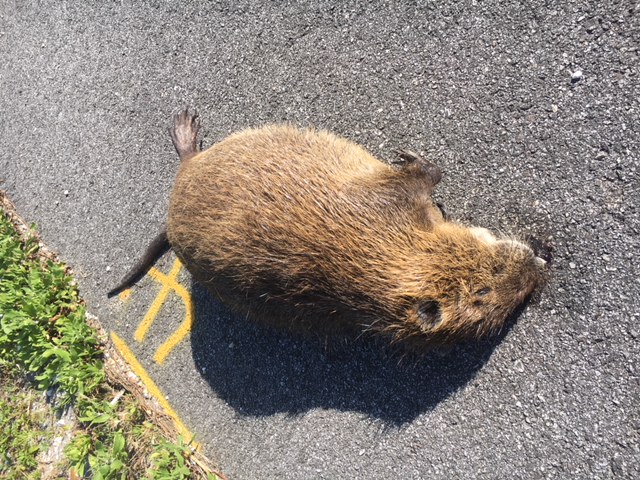
A dead nutria found along a roadside in Escambia County.
Photo: Rick O’Connor
Tiger shrimp
The invasive tiger shrimp were reported in Pensacola Bay around 2013. We have had no reports since. EDDMapS shows 9 records from Pensacola Bay and 1 record from Milton.
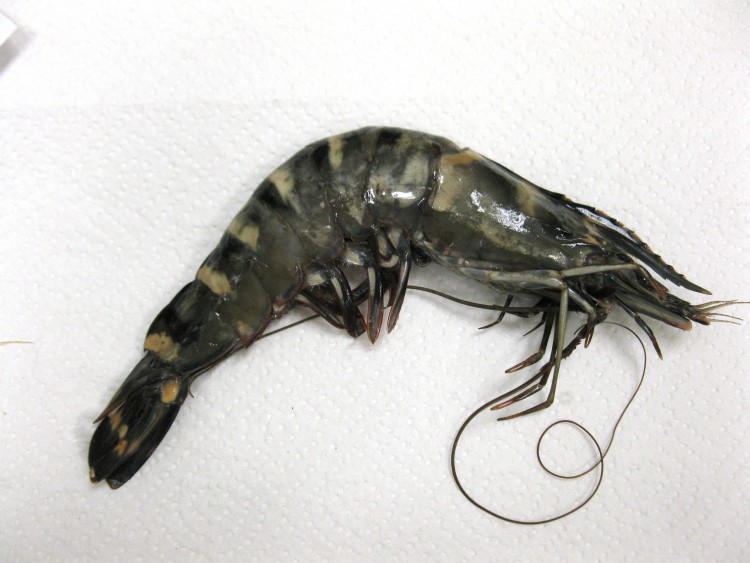
The nonnative Asian Tiger Shrimp – also known as the Black Tiger Shrimp
Thrush Cowries
This is a new invasive species first reported this summer. The snail has been found on the pilings of the snorkel reef at Park East, Navarre snorkel reef, Pensacola Beach fishing pier, Casino Reef, and along the beach near the Flora-Bama. If you see this snail, please contact the Escambia County Extension Office.
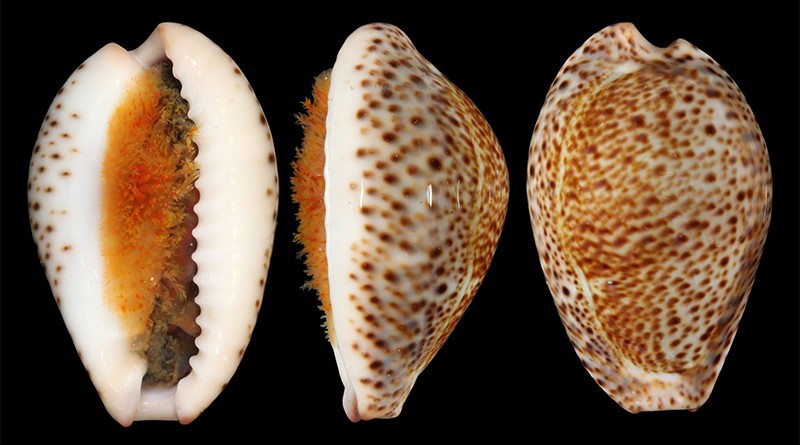
The thrush cowrie.
Photo: FWC.

by Mark Mauldin | Oct 21, 2025
Fall is here – peanuts are being picked and football season is in full swing. With fall being synonymous with the end of the growing season, it is a surprisingly good time of year to start many vegetation management operations. Fall is a particularly good time of year for a land manager to chemically control unwanted perennial vegetation.
–
General Comments & Caveats
I know plants can’t read calendars and to my knowledge they don’t watch football, so how would they even “know” it’s fall? Why does the season matter? In very general terms, perennial plants (those that live for many years) respond to shortening day length; the decreasing amount of sunlight stimulates the plants to begin storing more energy for the winter ahead. This process increases the downward flow (from leaves, towards roots and rhizomes, etc.) inside the plant. This phenomenon pairs very well with how systemic herbicides need to move within the plant to be effective. Put another way, again in very simplified terms, fall applications of systemic herbicides to perennial plants build on the plants’ natural processes associated with transitioning to winter dormancy and provide the herbicide with excellent access and opportunity to affect the plant.
While fall can be an excellent time to control perennial vegetation, taking advantage of this opportunity does require some additional attention to detail, as compared to mid-summer herbicide applications. For herbicides to work properly the chemical must be able to enter the plant and the plant must then be able to move herbicide though its xylem and phloem cells.
- In the fall it is not uncommon for it to become very dry. Drought stress can impede both necessary processes described above. Fall herbicide applications only work when adequate moisture is available.
–
- Foliar herbicides, like glyphosate, must enter a plant through a functional green leaf. At some point in the fall, the leaves of deciduous plants lose their functionality and thus their ability to convey herbicide to the rest of the plant. Chinese Tallow (popcorn tree) comes to mind here – if the leaves have changed color, they have been cut off from the rest of the plant making them useless for receiving herbicide.
–
- Cold temperatures (particularly below freezing) can cause plants to go dormant. Dormant plants do not circulate herbicide effectively. Plants vary greatly as to what temperature induces dormancy and how quickly they regain functionality after temperatures increase. When controlling perennial grasses, it is generally recommended to make fall applications before first frost and the browning of leaves that closely follows. For plants that retain green leaves after frost (privet, for example), make sure temperatures are well above freezing at the time of herbicide application.
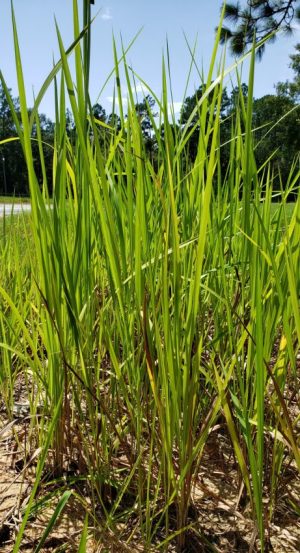
NOW is the time to treat cogongrass – fall, with good soil moisture. Don’t miss this ideal window for herbicide application.
Photo Credit: Mark Mauldin
–
Specific Vegetation Management Practices to Consider this Fall
- Kill Cogongrass. Almost every year, about this time I write an article reminding folks that now is the best time of year to kill cogongrass. I won’t rewrite the article this year, I’ll just include links to previous iterations – see below. Cogongrass is bad, if it’s on your property kill it now. In my opinion, it is the most troublesome weed we have here in Northwest Florida. It is very difficult to control; so, you need to do everything you can to improve your chances of success. Spraying in the fall (not mid-summer) really helps.
–
- Control Trees and Brush. Fall and winter are excellent times of year to employ several different methods which allow you to apply herbicide directly to induvial woody plants with relatively little risk to surrounding desirable vegetation. While very effective, all these individual plant techniques are quite labor intensive, making the cooler temperatures associated with the fall perhaps more important to the applicator than the plant physiology and herbicide efficacy discussed earlier. Use these links to access videos that discuss each technique in detail.
–
Foliar applications (to the leaves) of herbicide to small trees and woody brush can be very effective in the fall, for the reasons mentioned earlier and provided all of the caveats mentioned earlier are accounted for. That said, foliar applications have their limitations and generally shouldn’t be used on trees over 8ft tall. Foliar applications also generally carry more risk of damage to surrounding desirable vegetation. All that said, there are times when there is no surrounding desirable vegetation – think about doing site prep for a silviculture planting or clearing an opening for a wildlife food plot planting. In these kinds of situations fall timed, broadcast, foliar applications of systemic herbicides can be highly effective.
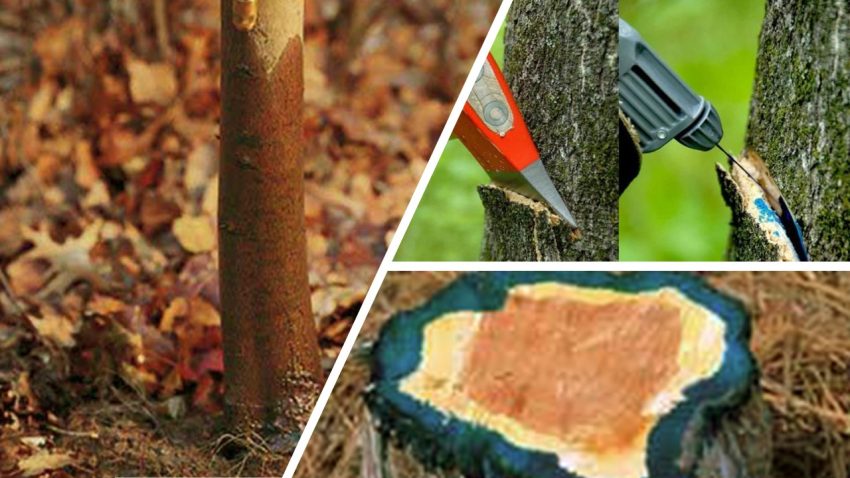
During the fall and winter trees and woody brush can be controlled via a variety of highly selective techniques, including basal bark, hack-and-squirt, and cut stump treatments. Image Credit: IFAS CAIP
–
- Mow??? I very infrequently recommend mowing for weed control but if weeds have not already made seed (many already have), fall mowing can clean up open spaces while helping to lessen the seed bank available for next year’s crop of weeds. Granted, mowing is great for quick aesthetic benefit, but it must be timed correctly to provide any long term, meaningful vegetation management. Most perennial plants can and will recover after being mowed, so mowing them after they have made seed provides little lasting benefit. Along the same lines, annual plants naturally die after making seed making timing very important to providing any meaningful weed management.
–
Fall is always a busy time year, but between tailgate parties and trips to the pumpkin patch be sure to take advantage of the opportunities the season provides for the highly effective management of some otherwise very hard to control vegetation. If you have any questions or would like to discuss any of these concepts in more detail, please don’t hesitate to reach out to me directly at mdm83@ufl.edu or 850-638-6180.

by Rick O'Connor | Sep 8, 2025
They continue to come. Invasive species have always been a problem in Florida and many of the south Florida species are moving north. One of these is a new marine snail – the thrush cowrie.
This snail is from the Red Sea and Indian Ocean and has been dispersing across the oceans for some time now. Their larva are planktonic and can be carried by the current but are also believed to be dispersed via ships ballast. They were first reported along the eastern coast of Florida in 2022 and have recently been found along the Florida panhandle.
They are most abundant in waters less than 25’ feeding on vegetation but secrete their eggs on hard substrate like jetties and seawalls. If you find this snail, please remove it from the water and report it to your Sea Grant Agent at the local Extension Office. Information we would like when reporting includes the date found, time, location (latitude and longitude if known), water depth, how many, live or dead, your name, and any comments you would like to include.

The thrush cowrie.
Photo: FWC.
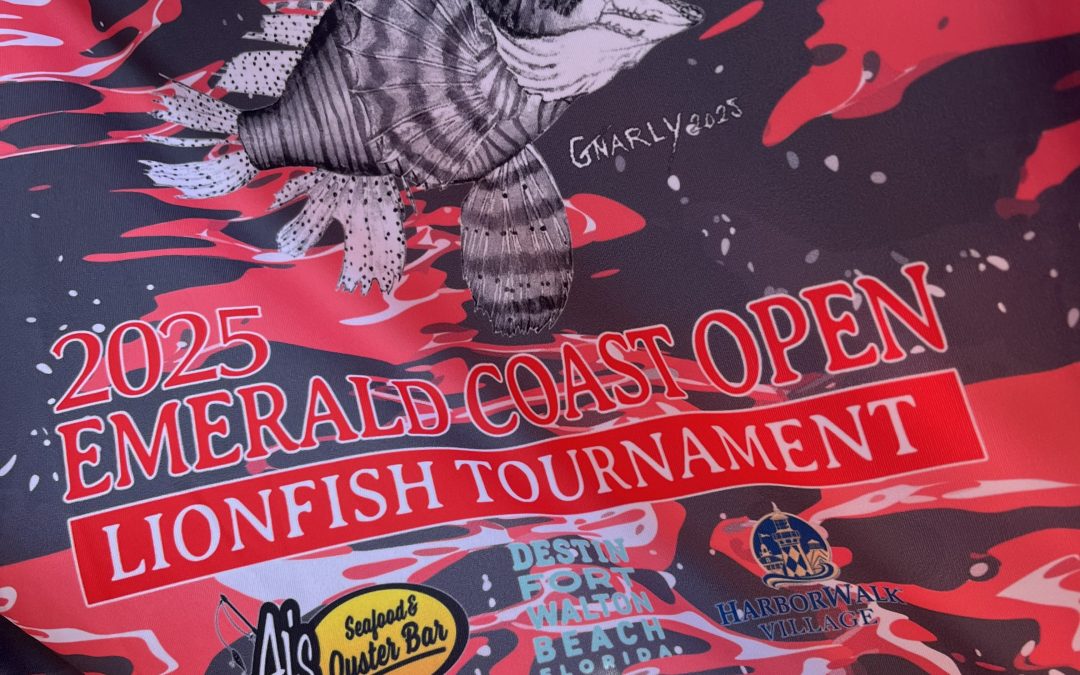
by Dana Stephens | Jun 6, 2025
Li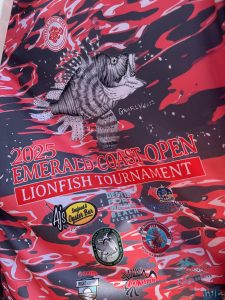 onfish slayers, divers, fisherfolks, and ocean lovers joined for an exhilarating 2025 lionfish tournament and awareness festival last weekend at Harborwalk in Destin, Florida.
onfish slayers, divers, fisherfolks, and ocean lovers joined for an exhilarating 2025 lionfish tournament and awareness festival last weekend at Harborwalk in Destin, Florida.
The Emerald Coast Open is the largest lionfish tournament in the world. Lionfish are venomous marine fishes native to the South Pacific and Indian Oceans, or the Indo-Pacific region. Lionfish found along the southeastern United States coast, including the Emerald Coast of Florida, are not native. Lionfish are considered invasive species in the southeastern United States. With few natural predators and an ability to outcompete native species, lionfish can cause damaging impacts to native fishes, crustaceans, and the oceanic ecosystem overall.
The Emerald Coast Open and numerous partners, including Florida Sea Grant, support the lionfish tournament as an effort to reduce the number of li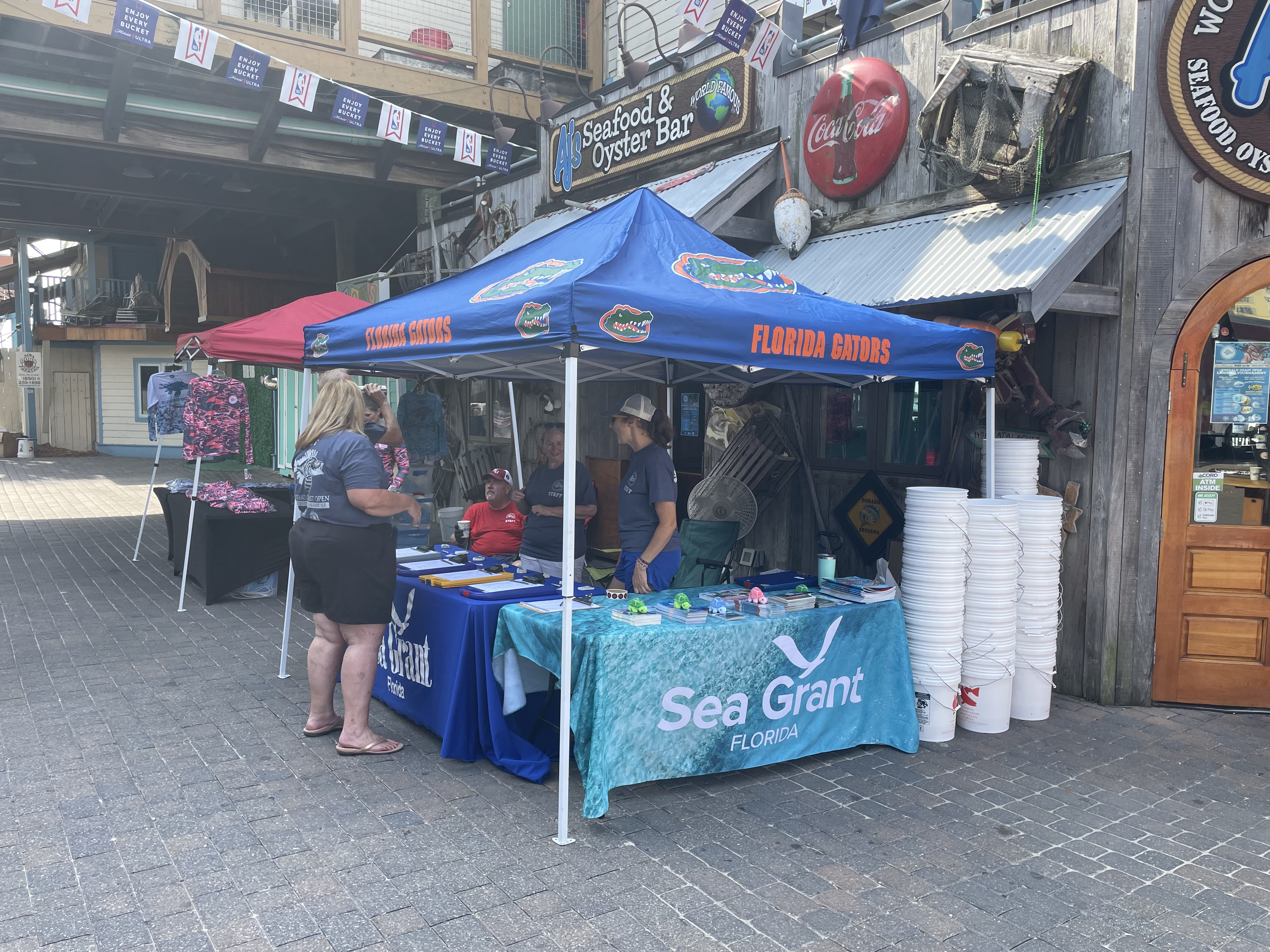 onfish along the Emerald Coast while educating and having fun. Amazing Emerald Coast volunteers (there were 35 this year) processed the lionfish—counting, weighing, and measuring. The lionfish are sold to buyers like restaurant owners who make delicious lionfish dishes, additionally spreading education about lionfish and lionfish as a yummy food source.
onfish along the Emerald Coast while educating and having fun. Amazing Emerald Coast volunteers (there were 35 this year) processed the lionfish—counting, weighing, and measuring. The lionfish are sold to buyers like restaurant owners who make delicious lionfish dishes, additionally spreading education about lionfish and lionfish as a yummy food source.
This year was a HUGE success! There were 7,180 lionfish brough in by 143 participants during the pre-tournament and an additional 13,322 lionfish during the main tournament. This means there was a total of 20,502 lionfish were removed from our local waters during the 2025 Emerald Coast Open!
Emerald Coast Open award categories included: most lionfish, biggest lionfish, smallest lionfish, guess the lionfish contest total, and restaurant week. Winners received $65,000 in cash prizes along with participant raffle for amazing prizes worth over $60,000. Winners for each category are listed here and on the Emerald Coast Open’s website and Facebook page.
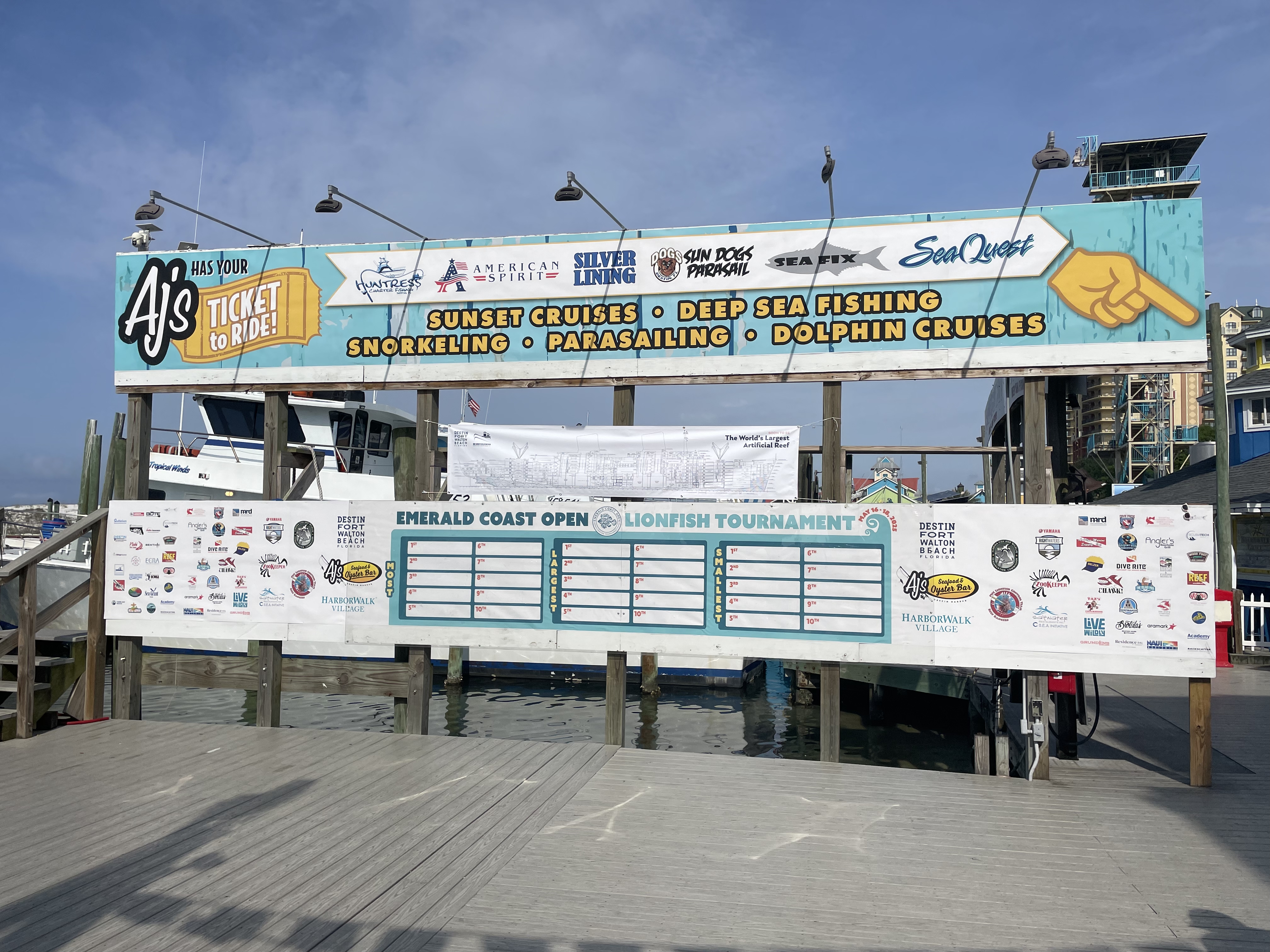 \
\
M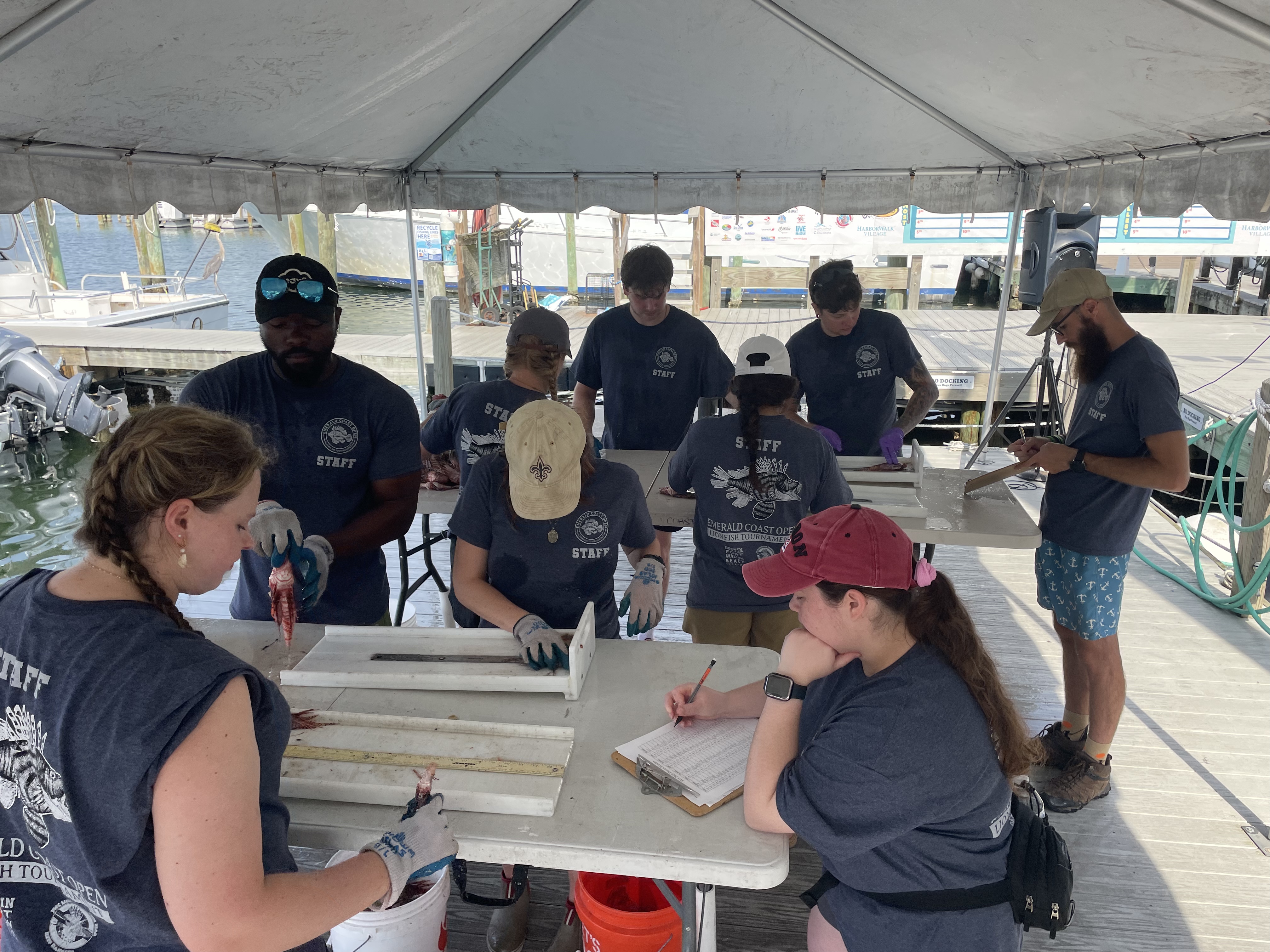 ost Lionfish
ost Lionfish
1st– DWM1- 2038 lionfish
2nd– Reef Madness- 1256 lionfish
3rd – Shark Quest- 1034 lionfish
4th – Sea Meat- 1029 lionfish
5th – Rubber Duck- 965 lionfish
6th – Covered in Blood- 909 lionfish
7th – In the Clouds- 817 lionfish
8th– DWM Spinal Tap- 695 lionfish
9th– Zookeeper Slayers- 477 lionfish
10th-Black Flag- 457 lionfish
Largest Lionfish
1st– In the Clouds- 17.2 inches
2nd– All Riled Up- 17.1 inches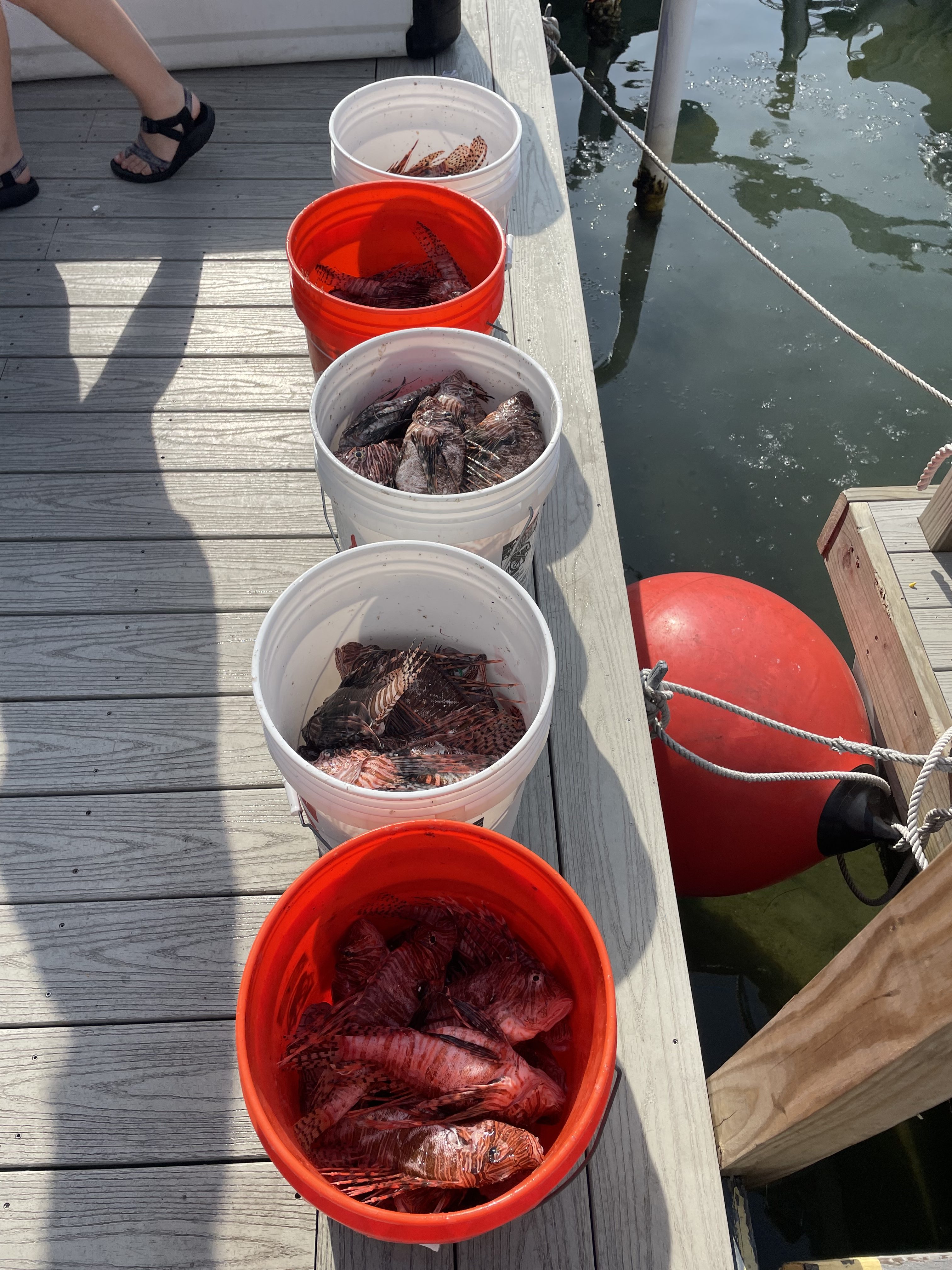
3rd – Off the Deep End- 16.9 inches
4th – Pilot Plunder and Pillage- 16.7 inches
5th – Fin Reapers- 16.6 inches
6th – Hookshott- 16.5 inches
7th – Down N Out- 16.4 inches
8th– Opted Out- 16.3 inches
9th– Tie- Covered in Blood- 16.2 inches
10th-Tie- Rum Fish- 16.2 inches
Smallest Lionfish
1st– Looking Back- 2.87 inches
2nd– Todd’s Team- 3.11 inches
3rd – Tie- In the Clouds- 3.14 inches
4th – Tie- Blue Bucket- 3.14 inches
5th – All Riled Up- 3.38 inches
6th – DWM1- 3.54 inches
7th – Smokediver- 3.62 inches
8th– Shark Quest- 3.66 inches
9th– Tie- Zookeeper Slayers- 3.74 inches
10th-Tie- Off the Deep End- 3.74 inches
Guess Lionfish Total
Carole Donaldson- Guessed 13,300, which was 22 less than the actual 13,322 total
Restaurant Week
1st– La Paz
2nd– Bitterroot
3rd– Beach Walk Café
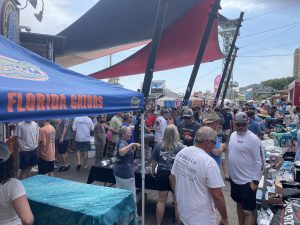

by Rick O'Connor | Jun 7, 2024
Northwest Florida Regional Lionfish Workshop Notes
Feb 8, 2024 – Ft. Walton Beach, Florida
Lionfish first appeared in the northern Gulf of Mexico in 2010. At that time, it was a huge concern – and still is – but it got the public’s attention. Fishermen were concerned that lionfish would deplete targeted species they enjoyed catching and made money from. The number of lionfish divers were encountering was staggering and videos showed reefs that were basically covered with them, and few other species around.

The Invasive Lionfish
The community reacted by initiating a few local tournaments with awards and prizes and there was a push to harvest them commercially as a food product – lionfish are very good to eat. In 2013 the Florida Fish and Wildlife Conservation Commission and Florida Sea Grant held its first regional workshop to discuss the state of the lionfish invasion in our area and how management efforts were going. It was reported at the time that lionfish densities off the Pensacola area were among the highest in the South Atlantic region. They seemed to have a preference for artificial reefs over natural ones and there were studies suggesting how frequently lionfish removal efforts were needed in order to decrease their population. Studies showed that on reefs where lionfish were abundant, red snapper stayed farther away and further up in the water column. There were several talks on the general biology of the creature – which was still unknown to much of the public.
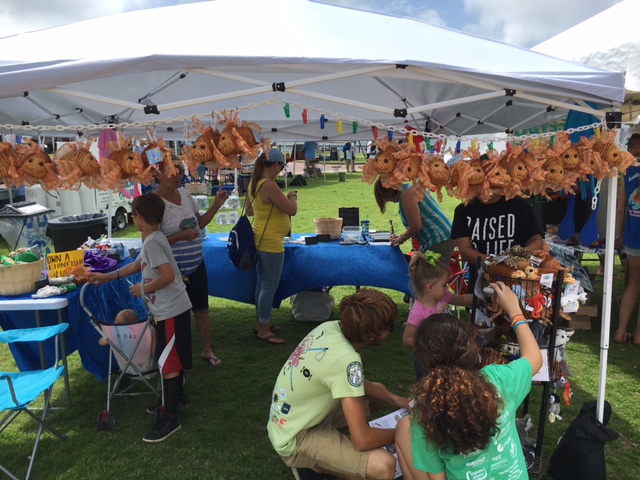
The Lionfish Removal and Awareness Day Event in 2017.
Photo: Rick O’Connor
In 2019 the 2nd regional workshop occurred. The densities of lionfish had declined – possibly due to the commercial and recreational harvest efforts as well as the lionfish tournaments that were occurring. It was at this time that divers began to notice skin lesions on some of the fish and there were questions as to what was causing this and whether it had an impact on their populations. The commercial harvesting had not gone as well as expected primarily due to pricing issues, but education/outreach efforts had made a big impact – almost everyone knew about lionfish and the problems they were causing. Some on the commercial harvest side of the issue had turned to taking visiting divers out to hunt lionfish. For many this was a more lucrative venture than harvest and selling. But people still wanted to eat lionfish and finding local places that served was not easy.
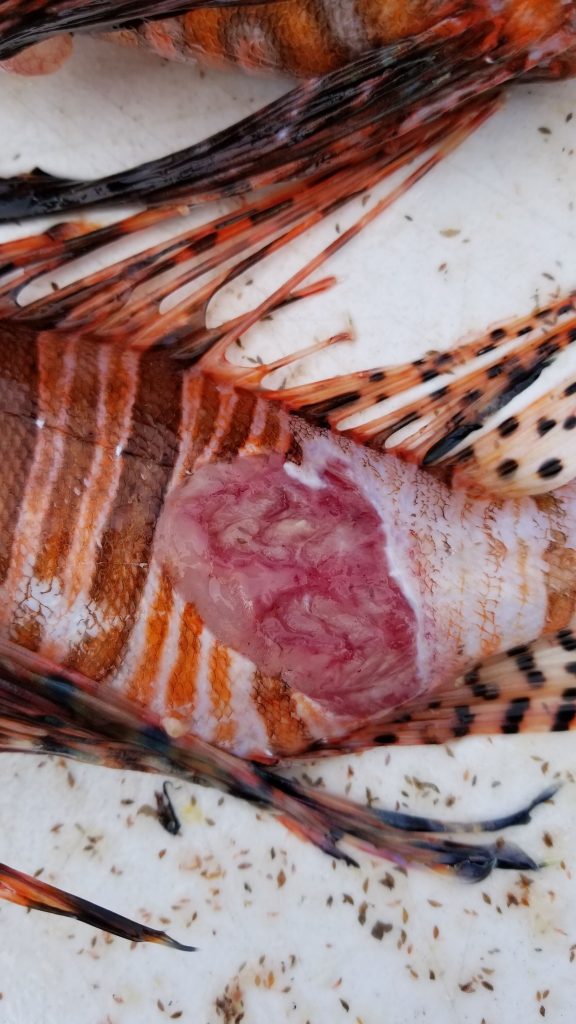
Skin ulcers have been found on many lionfish in the region.
Photo: Alex Fogg
The 3rd Regional Lionfish Workshop was scheduled for 2024 and occurred in February in Ft. Walton Beach. 52 attended to hear presentations on the latest research, commercial harvest, tournaments, and education/outreach efforts. Here are some highlights from those presentations.
Research Updates
- The high densities in 2013 had declined by 2019 but there was no update on current densities of lionfish. Anecdotal evidence from divers suggested that they may be increasing again.
- The source of the skin lesions was still unknown, but some evidence suggested that it could have contributed to the decline of lionfish between 2013-2019. The lesions are still occurring in lionfish.
- eDNA studies by the University of West Florida found lionfish eDNA in samples collected from the upper portions of local estuaries – suggesting they may have entered the bay. The research team also found lionfish eDNA in the feces of some shorebirds nesting in the area. This triggered more questions than answers.
- PCB monitoring in fish tissue obtained from the USS Oriskany as part of the artificial reef permit. The initial target species for this study have declined on the wreck – or at least at not as frequently harvested as the study required. However, lionfish have increased on the reef and are now being used to continue this monitoring project.
Commercial Harvest Updates
- Florida Sea Grant presented results of a regional survey of seafood buyers and restaurants. Few were selling lionfish. Concerns included size and yield from processing, adequate supply, and the fact they were venomous. However, almost all of them were interested in selling lionfish and were willing to learn how to navigate these barriers to make it happen.
Tournament Updates
- The FWC Lionfish Challenge is still going strong, and they plan to continue to support it.
- The Emerald Coast Open is still the largest lionfish tournament in the country. This year they harvested over 18,000 lionfish.
- Overall, across the region and state, lionfish tournaments were on the decline.
- International tournaments reported mixed results – some doing well, some not so well. Those doing well were doing very well.
- A new tournament was kicking off in Pensacola during the fall season – the Pensacola Lionfish Shootout.
Education and Outreach Updates
- Citizen science programs are increasing.
- Many school programs have included lionfish topics within their lesson plans.
Some questions remain unanswered currently.
- Have the densities of lionfish increased or decreased since 2019?
- What is the cause of the skin lesions found on some lionfish?
- Are lionfish inhabiting parts of our estuaries?
- Can we get lionfish on more menus in the region?
The next regional workshop is scheduled for 2029. Until then, many will be involved in trying to answer these questions and manage this problem. If you have any questions concerning the current state of lionfish in our area, please contact your county extension office.
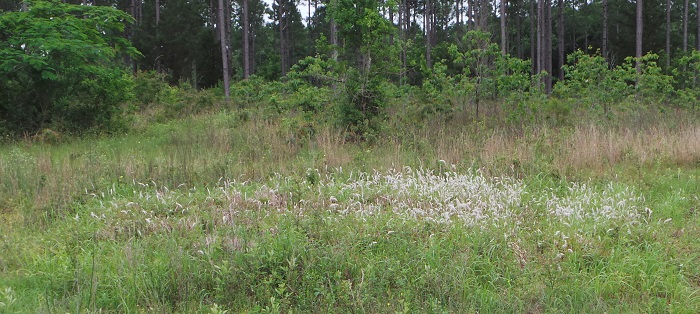
by Rick O'Connor | Apr 20, 2024
Cogongrass (Imperata cylindrica) is one of the most noxious weeds in the U.S. and has been a problem in the agricultural and timberland for decades. In more recent years it has been found on our barrier islands. Stands of cogongrass on the beaches are not as massive and dense as they are in the upland regions of our district, but now is the time to try and manage it before it does. And NOW is the time to identify whether you have it on your property or not – it is in seed.

Cogongrass shown here with seedheads – more typically seen in the spring. If you suspect you have cogongrass in or around your food plots please consult your UF/IFAS Extension Agent how control options.
Photo credit: Mark Mauldin
Cogongrass produces blades that resemble St. Augustine but are taller and wider. The blades can reach a height of three feet and the color is more of a yellow green (lime green) than the deep green of St. Augustine. If you can touch the blade, you will notice that the midline of the parallel leaf veins is off center slightly and the edges of the blades are serrated – feeling like a saw blade when you run fingers from top to bottom. They usually form dense stands – with a clumping appearance and, as mentioned, it is currently in seed, and this is very helpful with identification.
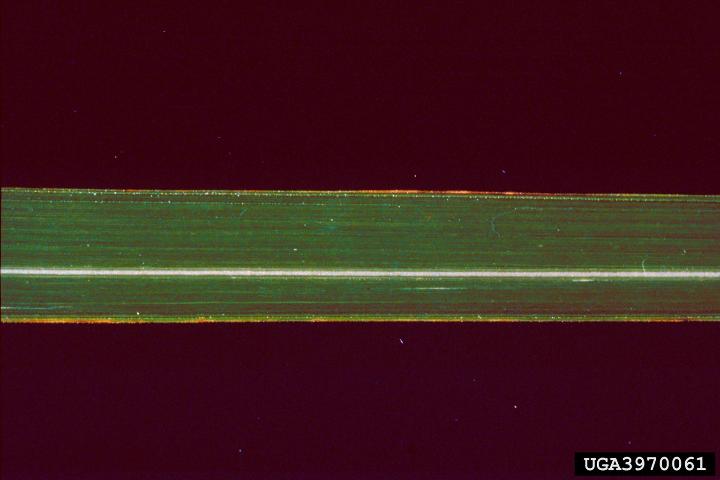
The midline vein of cogongrass is off-center.
Photo: UF IFAS
The seeds are white, fluffy and elongated extending above the plant so the wind can catch them – similar to dandelions. These can easily be seen from the highway or riding your bike through the neighborhoods. As mentioned above, if you see seeds like this you can confirm the identification by examining the leaf blades. You can also send photos to your county extension office.
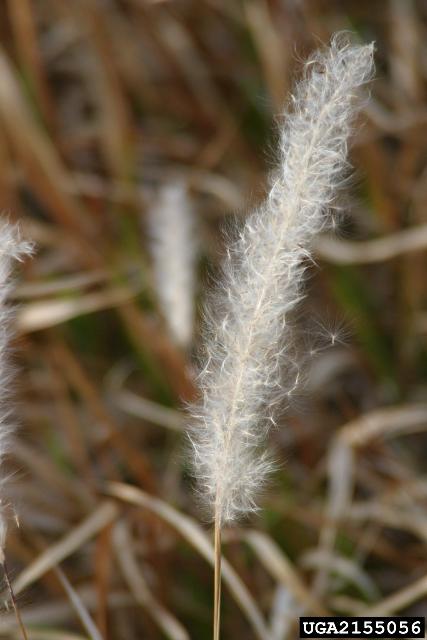
The white tufted seeds of cogongrass.
Photo: University of Georgia
If the identification is confirmed the next step is to report the location on EDDMapS – https://www.eddmaps.org. You can also do this with the free app IveGotOne (which can be found on the EDDMapS website or any app store). HOWEVER, you cannot report private property without their permission.
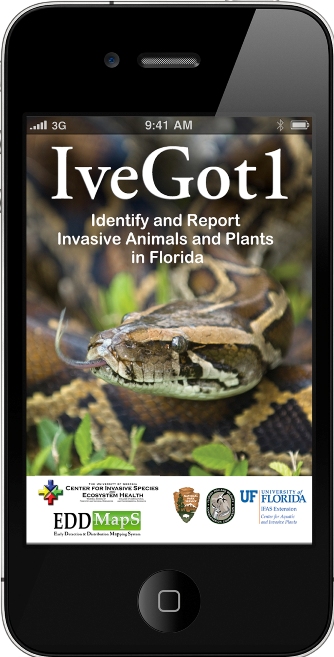
The next step would be management. It is not recommended to mow or disturb the plant while in seed. Herbicide treatment is most effective in the fall. Many will mow the plant, allow the grass to resprout no more than 12 inches, and treat this with an herbicide. It is recommended that you contact your county extension office for recommendations as to which herbicide to use and how.
The negative impacts of this noxious grass have been an issue in the upland communities for decades. There have been few major issues with it in the coastal zone, but early detection rapid response is the most effective management plan to keep negative impacts from occurring. We encourage coastal communities to survey for cogongrass while it is in seed and develop a management plan for the fall.




























